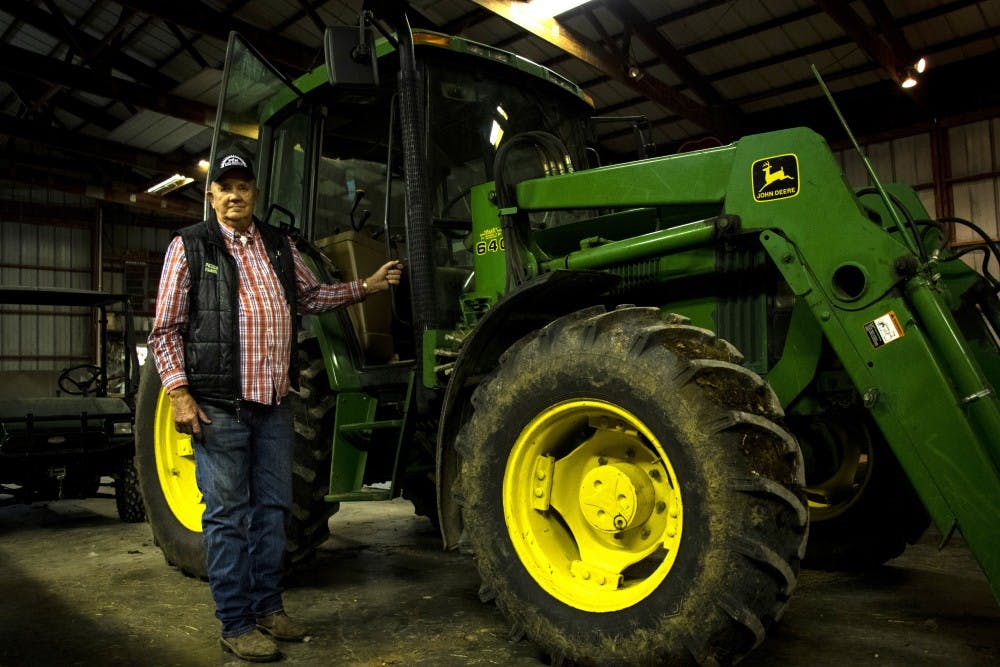His cows and roosters are hard at work mooing and cock-a-doodle-dooing, but hay farmer Joe Peden has put away his farming equipment for this year’s season.
Governor Holcomb requested agricultural disaster designation for Monroe County in July. Press secretary Rachel Hoffmeyer told the Indiana Daily Student in a text message that Holcomb’s request was approved on Aug. 30.
Troy Hopson, the county executive director for the Monroe USDA Farm Service Agency, said the designation allows farmers to apply for low-interest emergency disaster loans through a USDA program called the Farm Service Agency. Hopson believes there haven’t been many loan requests at this time, but he said many farmers will wait to make the decision to apply until they’ve finished harvesting and determined their yield, or bushel per acre.
Hay farmer Joe Peden said he was relieved when he finished harvesting around 30 days ago. He raises hay on a small portion of his nearly 1,400 acres of farmland and rents out portions of his land to other farmers. He was inducted into the Monroe County Hall of Fame last week for his knowledge of agriculture and farming.
“I think this year’s rainy spring kind of opened peoples’ eyes to the fact that if farmers didn’t get their crops out there would be a lot less food,” Peden said. “People began to realize the value of agriculture.”
Hopson said many farmers were unable to plant certain parts of their fields due to this year’s rain. Some farmers were forced to plant their crops twice because the first round became too wet, he said.
“If they carry crop insurance, which most farmers do nowadays, they can get a payment,” Hopson, who farms corn, soybeans and occasionally wheat, said.
Larry Stanger rents farmland from Peden to grow corn, soybeans and hay. Stanger said he was unable to plant 208 acres of his farm and 34 acres of planted land flooded twice.
Stanger and Peden said most farmers work extra jobs throughout the year to boost their income. Both men have worked on farms since they were children.
“There are very few what you'd call ‘full-time farmers,’" Peden said. “Some run a construction business on the side and some sell seed corn.”
Stanger is about half way through harvesting his crops this season, and he said he’s impressed with the results.
“Well, we’re getting a surprise!,” Stanger said. “A lot of it is better than I thought it would be, I didn’t know whether I would have anything. You’ve just got to be thankful the good Lord gave you what you got.”
Hopson said the rain’s abrupt stop in August and September did not help all farmers. Because many farmers got their seeds in the ground late, many plants had shallow roots and were not mature. Many of the roots dried out, he said, which led to smaller, less developed plants.
“Unfortunately, there is nothing you can really prevent,” Hopson said. “It’s up to mother nature.”
Correction: A previous version of this article stated Joe Peden owns 14,000 acres of farmland. He owns 1,400 acres. The IDS regrets this error.




